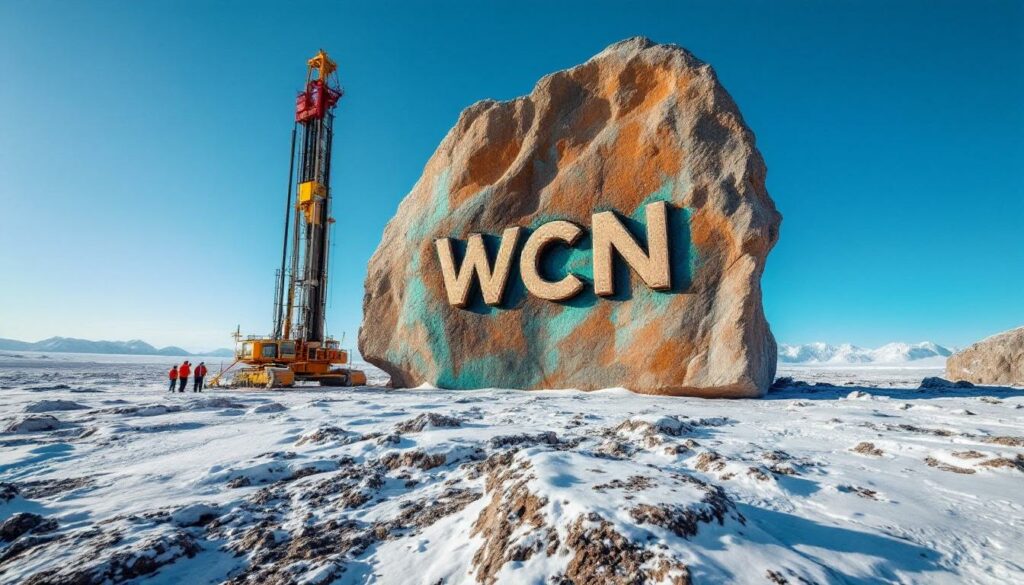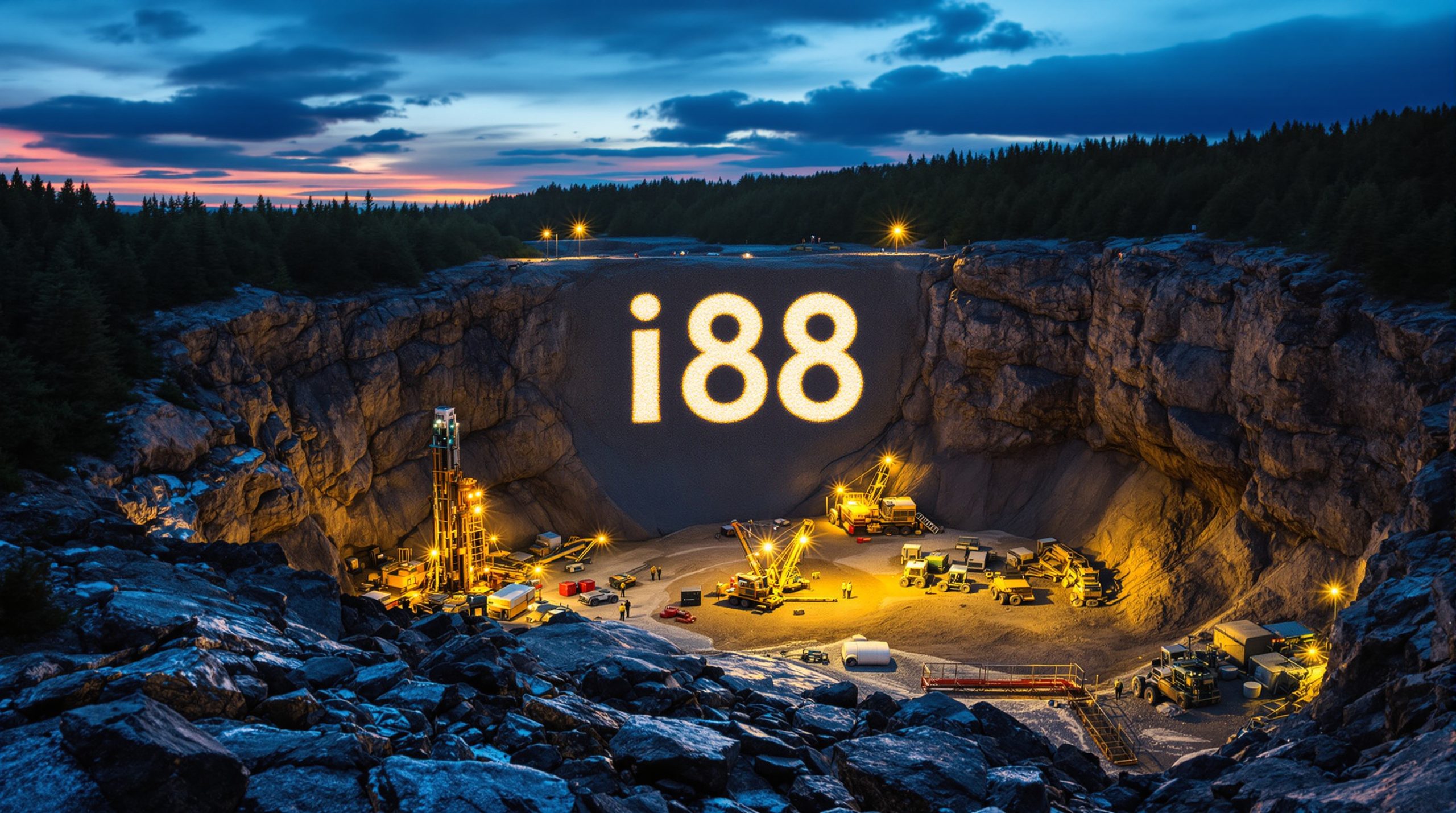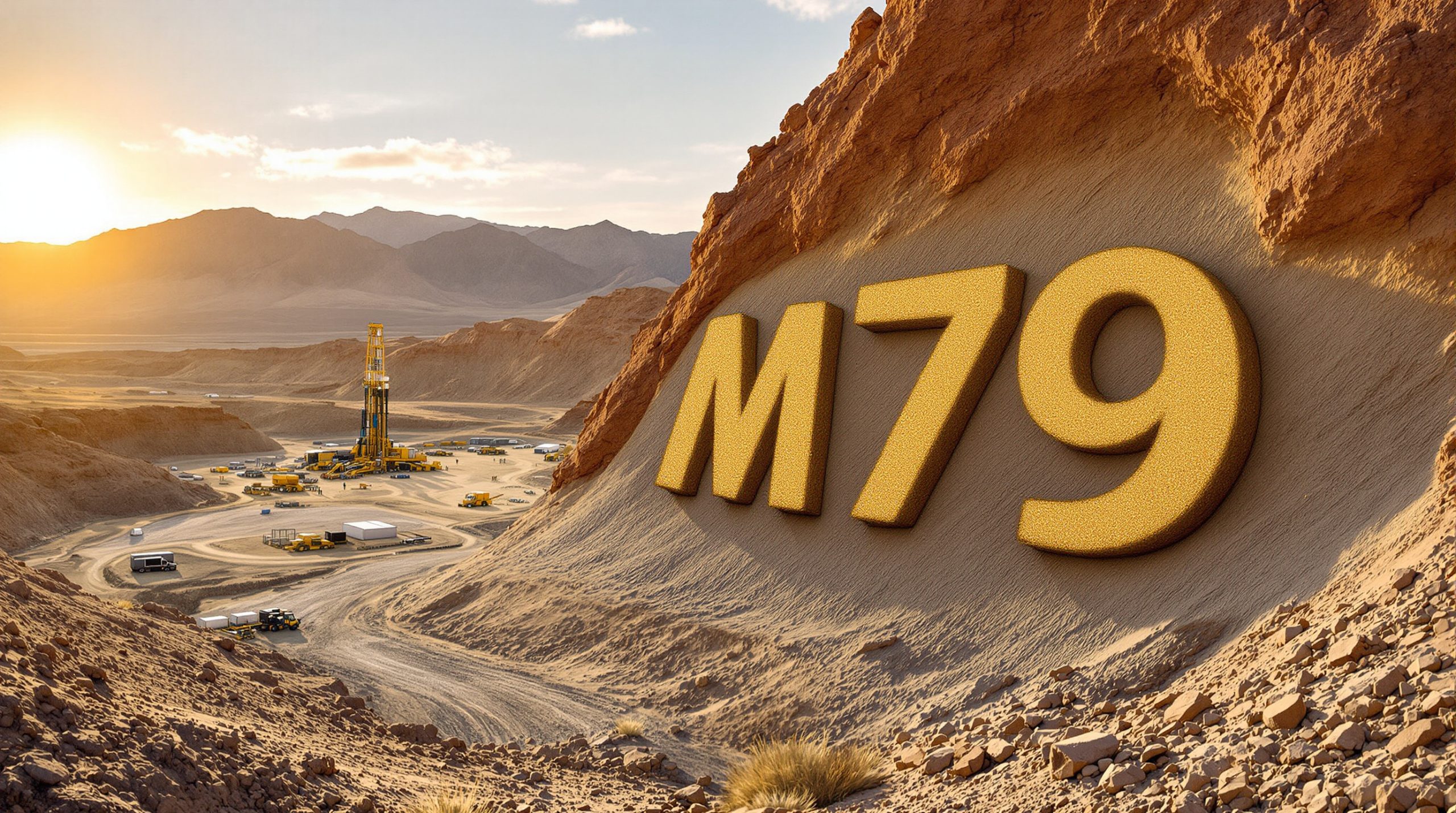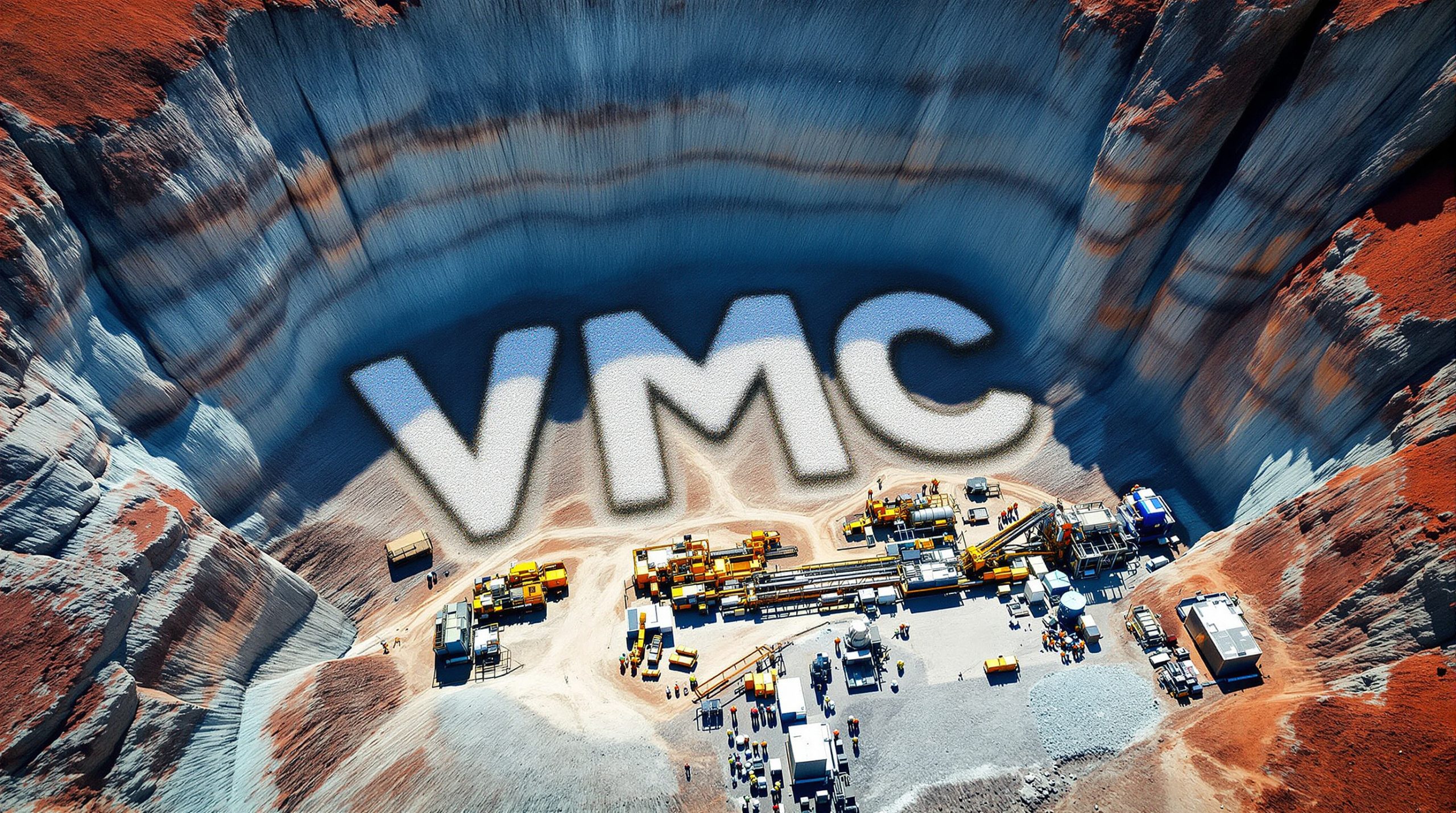White Cliff Minerals Expands Rae Copper Project Exploration
White Cliff Minerals (ASX: WCN) has ramped up exploration efforts at its 100% owned Rae Copper Project in Nunavut, Canada, with the addition of a second drilling rig and the discovery of significant new copper mineralisation zones near the Danvers deposit.
Accelerated Drilling Campaign Delivers Early Success
The company now has two drill rigs operating simultaneously at the promising Rae Copper Project, with 1,702 meters of RC drilling and 547 meters of diamond drilling successfully completed to date. This dual-rig approach allows White Cliff Minerals to pursue multiple targets concurrently, maximizing efficiency during the Canadian field season.
Most significantly, field work has revealed a new 250-meter strike zone of chalcocite-bornite-malachite mineralisation adjacent to the known Danvers deposit. This discovery provides substantial upside potential to the existing resource. Additionally, a greater lateral extent of copper mineralisation has been identified 4km southwest of Danvers, where previous rock samples returned impressive grades of up to 16.15% copper and 68.5 g/t silver.
Managing Director Troy Whittaker commented: "The team in a short space of time after remobilisation have identified significant potential upside at the Danvers deposit, with new, previously unidentified potential copper rich zones being identified."
New Mineralisation Zone Shows High-Grade Potential
The newly discovered mineralisation adjacent to Danvers occupies a topographic low trending northeast to southwest, matching the vein orientations in outcrop and the strike of the main deposit. Visual observations indicate promising copper content across multiple samples:
| Observation ID | Host Rock | Mineralisation Form | Chalcocite (%) | Bornite (%) | Malachite (%) |
|---|---|---|---|---|---|
| X961216 | Amygdaloidal basalt | Vesicle fill | 5-10 | 15-20 | 10-15 |
| X961205 | Massive basalt | Veinlet-disseminated | 10-15 | 3-5 | 5-10 |
| X961215 | Amygdaloidal basalt | Vesicle fill | 1-3 | 10-15 | 5-10 |
| X961214 | Brecciated basalt | Veinlet | 5-10 | 5-8 | 1-3 |
Note: Visual observations are not a substitute for laboratory analysis. Assay results from the drilling and sampling are expected later in August.
Two-Pronged Exploration Strategy
White Cliff Minerals is implementing a strategic dual-target approach at the Rae Copper Project:
-
Danvers Target: The RC rig is focusing on the expansion of the high-grade Danvers deposit, including testing the newly discovered mineralised zone. Earlier drilling at Danvers delivered exceptional results including 175m @ 2.5% Cu & 8.66g/t Ag and 90m @ 4% Cu & 7.5g/t Ag.
-
Hulk Target: The diamond rig is testing sedimentary horizons between 200-400m depth at the Hulk target, exploring for sediment-hosted copper systems analogous to world-class deposits like the Kupferschiefer and Central African Copperbelt.
Understanding Sediment-Hosted Copper Deposits
Sediment-hosted copper deposits represent some of the world's richest copper resources, accounting for approximately 20% of global copper production. Unlike porphyry systems, these deposits form when copper-rich fluids move through sedimentary rocks and precipitate at redox boundaries.
Sediment-hosted copper deposits typically develop in specific geological settings where oxidized, copper-bearing fluids interact with reduced sedimentary rocks. This interaction creates a chemical environment conducive to the precipitation of copper sulphide minerals. The process begins with copper being leached from source rocks by oxidised fluids, which then migrate through permeable pathways until they encounter a reducing environment.
Key characteristics of sediment-hosted copper deposits include:
- Formation at redox boundaries between oxidised and reduced rocks
- Stratiform or stratabound mineralisation patterns
- Typical sulphide mineralogy progression from chalcocite to bornite to chalcopyrite
- Association with evaporitic basins or organic-rich sedimentary rocks
- Common occurrence in rift basin settings
White Cliff's drilling at the Hulk Basin has confirmed the presence of reducing sedimentary rocks within the Rae Group, which lie unconformably above the oxidizing Husky Creek Formation. This creates an important redox boundary—a critical factor for copper sulphide precipitation.
The Coppermine Region shares significant geological similarities with major copper-producing regions such as the Kupferschiefer in Europe and the Central African Copperbelt. Furthermore, recent exploration has confirmed all required elements for a sedimentary copper system are present at the Rae Copper Project.
Upcoming Catalysts and Next Steps
Investors can look forward to several near-term catalysts:
- Drone MT Survey Results: A drone-based magnetotellurics survey across the Danvers mineral lease is underway with results expected in August
- Initial Assay Results: The first batch of assays from both drilling rigs anticipated later in August
- Expanded RC Program: Testing of the two newly identified mineralisation zones
The company is strategically positioned with its 75km stranglehold of the prospective sedimentary structure in one of the most underexplored frontiers for sediment-hosted copper systems.
Why Investors Should Watch White Cliff Minerals
White Cliff Minerals presents a compelling investment proposition for several reasons:
-
Resource Expansion Potential: The discovery of new mineralised zones at Danvers indicates significant resource growth potential beyond the historic estimate of 4.16 million tons at 2.96% Cu.
-
District-Scale Opportunity: The company controls 75km of prospective strike length in an underexplored copper region with demonstrated high grades.
-
Geological Validation: Recent work has confirmed all key elements required for a world-class sedimentary copper system, similar to Kupferschiefer and the Central African Copperbelt.
-
Near-Term News Flow: With assay results imminent and geophysical survey data expected shortly, investors can anticipate regular updates that could drive share price momentum.
The Rae Copper Project combines exceptional grades, significant scale potential, and exploration in a jurisdiction increasingly recognized for its mineral wealth. As global copper demand continues to rise with the electrification trend, projects with high-grade resources in stable jurisdictions like Canada represent premium opportunities in the resource sector.
Want to Invest in a Premium Copper Opportunity in Canada?
For investors seeking exposure to high-grade copper projects with significant expansion potential, White Cliff Minerals' Rae Copper Project presents a compelling opportunity. With two drill rigs currently operating, newly discovered mineralisation zones, and assay results expected soon, now is the time to learn more about this underexplored district-scale copper play. Visit White Cliff Minerals' website to explore their portfolio and stay updated on their progress in the promising Coppermine Region.




